Marcel Van Impe. Dance, freedom.
From nothing to everything
Marcel Van Impe, Carrara, Toscana, Italy
There are some kind of images that, more than others, seem to “talk” to us about the story and the portrayed dancer. Emblematic images, such as those created by the author, which “give voice” to a past, to a tense, dramatic, painful experience. A past regarding which, however, nothing else will be added here, except that it is a sort of ritual dance.
What follows, therefore, some reflections of a general nature on dance and not an intimate diary of the dancer depicted, who, in the locations and in the way he deems most appropriate, may eventually decide to integrate with his personal contribution, with the intimacy gradient that, if necessary, it will consider attributing. Rewriting that the narrative tension with which these images appear seem to forcefully recall.
Remind a kind of a… liberating act.
A sort of intimate liturgy, realized through a private performance that tries to express a residual, however ephemeral, form of… resistance and, perhaps, also of hope.
Hope from… nothing to everything.
A kind of dance that is understood as a symbolic and gestural universe that explores the spaces surrounding the bodies during the performance. It represents a symbolic journey towards truth and knowledge, which characterizes the path of human beings, including the author. Dance uses its own specific expressive approach, including a continuous rewriting the space that “imprison” the body involved in each performance.
It is a perpetual process, without interruption, sometimes composed of divisible units. These units are also significant and rotate like satellites in the orbit of the main “body” represented, for example, by the occasional dancer.
Marcel Van Impe, Carrara, Toscana, Italy
Real and imaginary body of the dancer that during each performance together stage the changing situational perspective through which dance continuously “measures” and interprets the world surrounding its own “body”. This “body” is both the starting point and the horizon and destination of dance’s revealing journey. A symbolic path that confuses, in a contemporary synergistic relationship, both the contingent background of the representation – to which the reference environment, close or distant, tangible or not, is correlated – and the execution time of the physical body dancing. A boundary that one tries to reach through the “oriented” management of this material body that dances in a space/time dimension that becomes itself an ideal “body”, the “substance” of the real and/or symbolic universe represented each time.
A biological body dancing outlines as semantic perimeter, a frame of interest, an inside and an outside that give each performance a mark of exclusivity, a unique imprint in the act, in the gesture through which dance expresses itself, becoming itself a significant “body”. This gesture is usually never “unconscious”, but always purposeful and directed. It is a “political” act, even in this context, determined to follow a defined path, aimed at revealing a specific dimension and/or truth.
For any dancer dance is a symbolic and gestural universe that explores the spaces around the bodies during the dancer’s performance. This exploration is symbolic of the path of dancer’s research towards truth and knowledge. The dancer’s body creates a semantic perimeter that gives a unique identity to each performance and the gesture is never unconscious but always purposeful and directed. Dance always is an oriented gesture in space and its interpretation depends on the underlying project that guides it.
In any case, for example in a case of a solitary performance, while the gesture is taken alone, it never could appear senseless and without a (final) destination.
Marcel Van Impe, Carrara, Toscana, Italy
Dance interprets the world around it and redefines the space around it through its gestures, bending space to a well-defined interpretive framework. Through its gestures, dance also formulates (meta)discourses about itself.
With its many expressive languages, the physical body, through the gesture of dancer, becomes a metaphorical gateway, an opening towards/on the world. Without this kind of ceremony, dancer – and therefore the physical body through it – would undoubtedly have further difficulties in expressing and “talking to us” about the world, limiting itself, perhaps, only to imagining it without being able to share it. Without this communicative propensity, without this changing liturgy of acts, dance could therefore even appear to us as senseless and incapable of “translating” the world. Dissolving, thus, also the multiple expressive capacities and narrative efforts of the real body that dances “in contact” with the world.
By using their own body, dancer exercises a certain power over the world at various levels, starting from what is immediately available (tools, ideas, etc.). Just as the tools and actions that allow the technical act of writing have made possible the creation of this very text you are now reading. Therefore, every action of the body adds an additional value, as everything that changes and transforms the existing, even by acting on itself, modifies the world compared to its previous state.
In the dancer’s perspective, the different visual geographies created by the bodies photographed represent a representative example, among others possible, of how our double body – composed of soul and body – relates to the world and translates itself into images. These translations are made by connecting each act and each idea created to its content, and each time our “double” body is put into play by supporting its relationship with the world. These connections and this interdependence seem to concretely document the multiple expressions of the soul, the consciousness of the body, and its being in the world. In this perspective, the body can be seen as both a “thing”, an object, and as “the” instrument capable of weaving this fabric of material and/or symbolic exchanges, in a dense and continuous dialectical interweaving with the world.
Dancer’s body expresses the idea of a constant connection between it and the world, and how every act and idea is linked to its content. The body is seen as a tool to weave a fabric of material and symbolic exchanges, thus creating a network of meaning with the purpose of attributing a sense and a purpose.7bis.
The case of illness and inner suffering is different, as the body seems to be in a transitional state, engaged in a liberating liturgy. Not in case of illness. When it comes to illness, the body seems to be set aside, as if it is no longer a part of the world, external to it like any object. Medicine, which considers the body only as a pure organism, focuses on this object, while the presence of illness is usually accompanied by suffering and pain, highlighting human fragility regardless of circumstances or dancer experiences.
Fragility reminds us of the finite nature of time. Sometimes we try to hide it, showing ourselves as strong and powerful instead of admitting it. In an era where decisiveness and arrogance are considered virtues to defend, thinking that fragility is not a weakness may seem strange. However, everyday history shows us that it’s not just displays of strength that make us grow, but often our many fragilities.
Fragility, perhaps followed by appropriate forms of resistance and even more appropriate forms of resilience. This fragility could be seen in tangible signs on the dancer’s body, as in this case, still marked by the effects of past traumas, yet still able to listen to their own body, even in moments of discomfort, suffering, and pain.
Pain and the sad quality of life often coexist with and accompany fragility. Pain awakens fear, which in turn reignites pain in an implacable vicious circle until the end. An end that does not only concern the body, which in some pathologies seems like an even more imminent appointment, in a perpetual, ever-present that incessantly replicates itself. The most intimate “body” dies continually.
Anyone could see dead inside a body that still breathes.
Marcel Van Impe, Carrara, Toscana, Italy
Fear is not only related to physical pain and the biological body, but can also manifest in mental and social suffering. The entire human condition is influenced and often overwhelmed by fear. This fear and pain can reflect on one’s personality and also affect the strategic network of relationships that characterizes the life of our social body. The fear of death marks the entire human existence.
Human life unfolds in function of death and, in particular, the fear of death. The fear of dying becomes the fear of living for those who fear death. Death is an enigma within the enigma of life, and it is a theme that the dancer has explored in relation to birth and the traumas that may accompany it.
To be alive, to avoid death, one usually tries everything, even living and prolonging pain. Pain becomes, in this perspective, a paradoxical sign of life. In other words, pain becomes an absurd, cynical, and mocking form of hope. In this condition, when one does not feel pain, one can even feel lost. One may even seek it out, waiting for it anxiously and experiencing another absurd sensation: the void of pain. This void can seem like a prelude to the end.
Pain is understood as an advance payment, an anticipation of the end, because only death definitively resolves and closes the accounts with everything, including pain. Sometimes we can be attached to pain, even when it is absent, as if it were another body that is missing. Unfortunately, this body is not always present. However, when pain is present, it can offer a form of “therapy” that seems irrationally capable of temporarily “giving back” life.
It is a “resurrection” that does not involve an afterlife, as many philosophical and/or religious beliefs claim, but rather a simply earthly life. This condition of further fragility risks, however, falling into nihilism. It is the nihilism of those who feel insignificant in this world and who are “forced” to hope, after having suffered so much in life, to be eventually rewarded for all this in an “Elsewhere” by “Someone”.
Marcel Van Impe, Carrara, Toscana, Italy
Whatever the reason may be, one cannot be lenient or, even less so, weak in the face of pain. Nor can pain be attributed with merit or meaning, while still recognizing its valuable and strategic function as an indicator of possible bodily harm.
In any case, pain is always unacceptable and cannot simply be normalized or excused.
Pain is a tragic experience that create fear and a sense of helplessness. Although it warns us that something is wrong, it usually does not provide explanations and seems to prevent us from obtaining them. It is an experiential sphere without meaning that sometimes represents only a stage in the journey of life and other times marks the entire existence of the unlucky protagonist. This can lead to a paradoxical attitude towards pain, in which humans endure and support a pain in their own body that is capable of making more noise than any other noise.
Everything smells like death.
Everything could “talk” us about death, including our body. In particular, the naked body, especially if it belongs to a sick person, seems to evoke two ideas related to death: on the one hand, the fragility of life that flows inexorably and ages everybody, and on the other hand, the perception of a body that is essentially already finished.
Those who experience pain are well aware of the self-destructive nature of the massacre game, which seems to characterize existence as an infinite limbo. Pain can be physical or emotional and represents a condition that puts life itself to the test.
The human being who experiences pain is fragile but also compassionate, capable of comforting others. Like a rarity, like an almost unattainable ideal. The body that suffers, that is affected by pain or illness, no longer responds to normal characteristic and becomes a “non-standard” body, which is subject to more or less extensive exclusion from society.
This new dimension of the body, which no longer conforms to the rules of social power coercion over the individual, gives it a new status. The body becomes a more difficult subject to manage because it is no longer a “docile” body. It is no longer, at least in part, a compliant social element and, as such, becomes a sort of foreign body. An altered and different body, due to the new condition acquired through illness and suffering.
The disease and suffering are seen as a form of diversity which is usually associated with something unpleasant, sad and even ugly to imagine, let alone to see or, worse still, to live. This diversity automatically opposes another universal positive idea, Beauty.
Beauty as well as Hope fighting against the dark tunnel of life represented by the disease and suffering.
A fight in a body that was once our most beloved… home.
Marcel Van Impe, Carrara, Toscana, Italy
Rome, 3/6/2023
Gerardo Regnani
Bibliography
________
Acquaviva S., Pace E., Sociologia delle Religioni. Problemi e prospettive, Carocci, Roma, 1999.
Alinovi F., Marra C., La fotografia. Illusione o rivelazione?, il Mulino, Bologna, 1981.
Barthes R., La camera chiara. Nota sulla fotografia, Einaudi, Torino, 1980.
Benjamin W., “Piccola storia della fotografia”, in L’opera d’arte nell’epoca della sua riproducibilità tecnica, Einaudi, Torino, 1931.
Bauman Z., La società dell’incertezza, Il Mulino, 1999.
Berger P., Luckmann T., La realtà come costruzione sociale, Il Mulino, 1997.
Borgna P., Sociologia del corpo, Biblioteca Essenziale Laterza, 2005.
Brancato S., Sociologie dell’immaginario, Carocci, Roma, 2000.
Bussagli M., Il nudo nell’arte: la storia, temi e soggetti, bellezza ed erotismo, Giunti, Firenze, 1998.
Celant G., Fotografia maledetta e non, Feltrinelli, Milano, 2015.
D’Autilia G., L’indizio e la prova. La storia nella fotografia, La Nuova Italia, 2001.
Dall’Olio C., “Edward Weston, una biografia ragionata”, in Edward Weston, (a cura di) Maggia F., Skira, Milano, 2012.
Debray, Vie et mort de l’image, Il Castoro editrice, Milano, 1999.
De Paz A., La fotografia come simbolo del mondo: storia, sociologia, estetica, Clueb, Bologna, 1993.
Dorfles G., Ultime tendenze nell’arte d’oggi. Dall’informale al Neo-oggettuale, Feltrinelli, Milano, 1999.
Eco U., Storia della bellezza, Bompiani, Milano, 2018.
Fiorentino G., Il valore del silenzio, Meltemi, Roma, 2003.
Floch J. M., Forme dell’impronta, Segnature, Paris, 2003.
Foucault M., Tecnologie del sé, Einaudi, 1992.
Gallinucci G., Il nudo in fotografia: analisi storica e concettuale, Università Ca’ Foscari, Venezia, 2016.
Galimberti U., Il corpo, Feltrinelli, Milano, 1987.
Galimberti U., Psiche e techne, l’uomo nell’età della tecnica, Feltrinelli, Milano, 1999.
Giddens A., Identità e società moderna, Il mulino, 1999.
Gilardi A., Storia sociale della fotografia, Bruno Mondadori, Milano, 2000.
Gilardi A., Storia della pornografia, Bruno Mondadori, Milano, 2002.
Goffman E., La vita quotidiana come rappresentazione, Il Mulino, 1969.
Grazioli E., 2000, Corpo e figura umana nella fotografia. Mondadori, Milano.
Iraci V., Il corpo, Politecnico, Milano, 2011.
Lemagny J.C., Rouillè A., (a cura di), Storia della fotografia, Sansoni, Firenze, 1988.
Marra C., Pensare la fotografia: teorie dominanti dagli anni Sessanta ad oggi, Zanichelli, Bologna, 1992.
Marra C., “La realtà che conferma l’ideale”, in Il Nudo fra ideale e realtà: Dall’invenzione della fotografia ad oggi, (a cura di) Weiermair P., Artificio Skira, Milano, 2004.
Marra C., Fotografia e pittura nel Novecento (e oltre), Mondadori, Milano, 2012.
Menna F., La linea analitica dell’arte moderna, Einaudi, Torino, 1975.
Merleau-Ponty M., Fenomenologia della percezione, Bompiani, 1945.
Newhall B., Storia della fotografia, Einaudi, Torino, 1984.
Palazzoli D., Il corpo scoperto: il nudo in fotografia, Idea Books, Milano, 1988.
Sontag S., Sulla fotografia. Realtà e immagine nella nostra società, Einaudi, Torino, 1978.
Szarkowski J., Photography until now, M.o.M.A., New York, 1989.
Wunenburger J.-J., Filosofia delle immagini, Einaudi, Torino, 1999.
Zannier I., L’occhio della fotografia, Carocci, Roma, 1988.
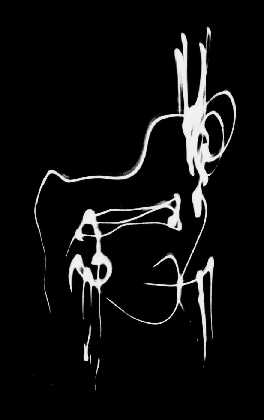
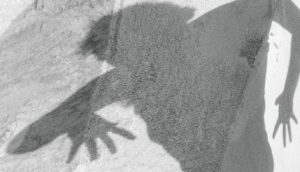
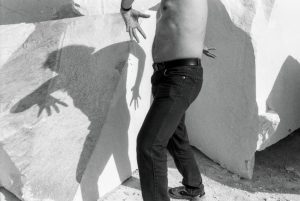
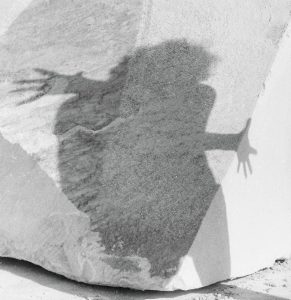
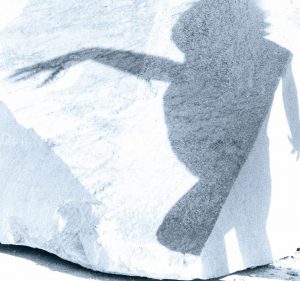
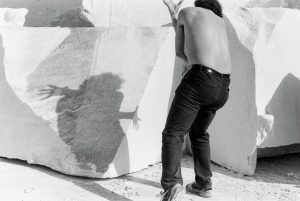
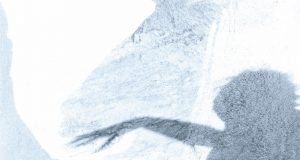
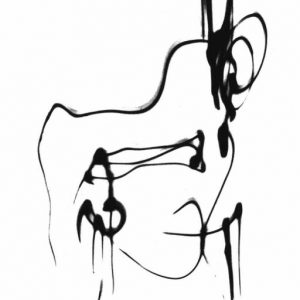
Wonderful and extremely sensitive and respectful review! Genius!!!
Everything in the review requires SILENCE! Absolutely meditative!!
Dear Gerardo,
Dear Massimo,
…, this tremendous wonderful review, I never deserved!
Love ❤️ you guys from the deapest emotions in my Haert, Soul and Brain!
“GO ON, PLEASE (!!!), Life goes on, ALWAYS!
I bow deeply for all of you!!!
I am happy !
THANK YOU SO MUCH